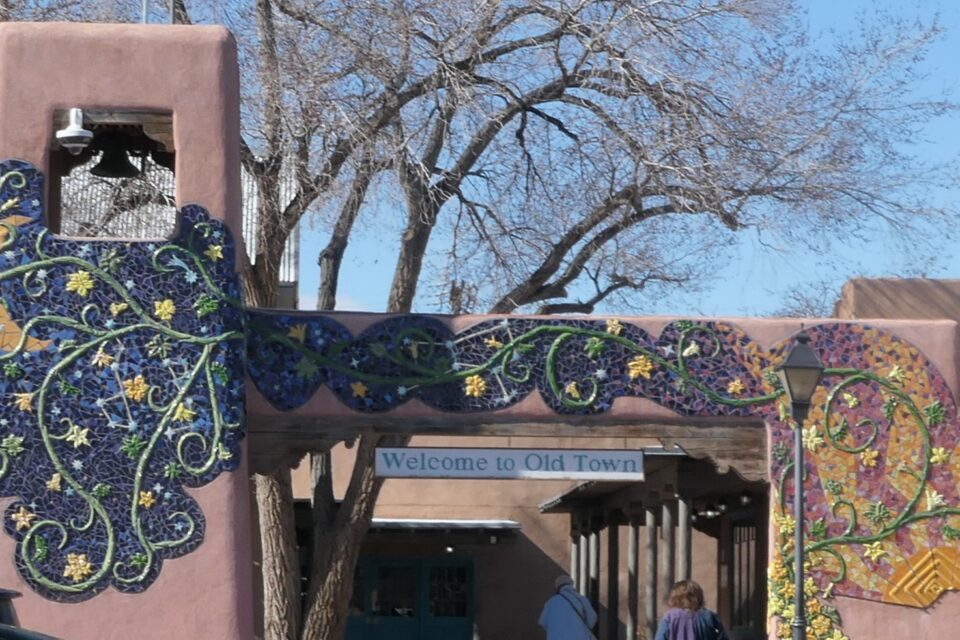FEBRUARY 10-11, 2024: We had come to Albuquerque expecting warmer weather. On Saturday morning we woke up to find everything white. It was cold. It was snowing. Thankfully, inside the motorhome the furnace was on, and we were comfortable. For a change, this campground had a good internet connection. I could finally watch the TV news from Israel.
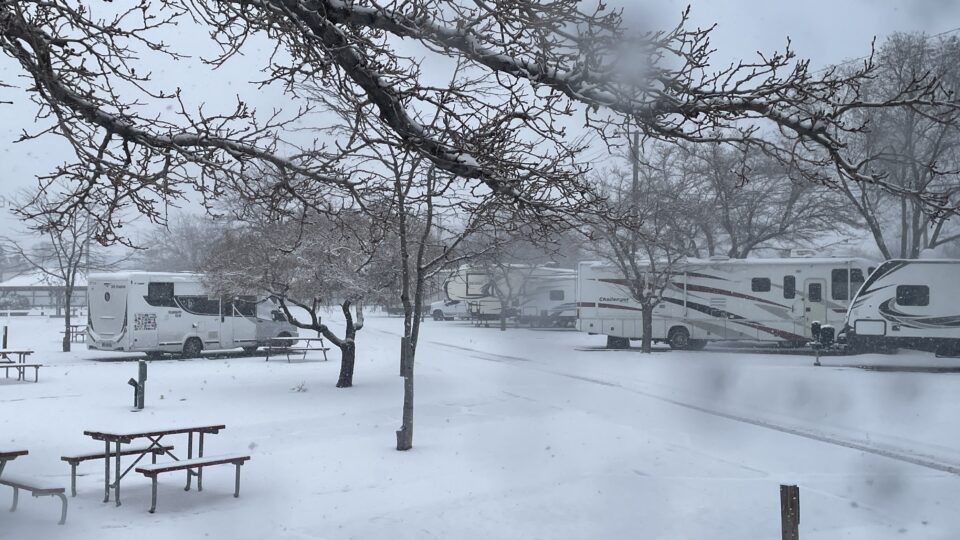
Sunday was our day to explore Albuquerque. Not everything went as planned. Of all the tourist attractions in the city, the only one I really wanted to do was the Sandia Peak tramway. This is a 15-minute tram ride to the crest of the Sandia Mountains for a panoramic view of the area. Unfortunately, the tram was undergoing renovations and was now closed for a few months. We needed to cross the tram off our list.
Instead, we would start the day visiting some Wandering Jew sites in the city. Our first destination was the Congregation Albert Cemetery, the Jewish cemetery adjacent to the Fairview Cemetery. Fairview Cemetery is a huge, historical cemetery with over 12,000 burials. I guess I missed the word adjacent in the description of the location of the Jewish cemetery, and we walked all over Fairview looking for the Jewish graves. After quite a while searching, we finally stumbled across the separate entrance to the Jewish Cemetery.
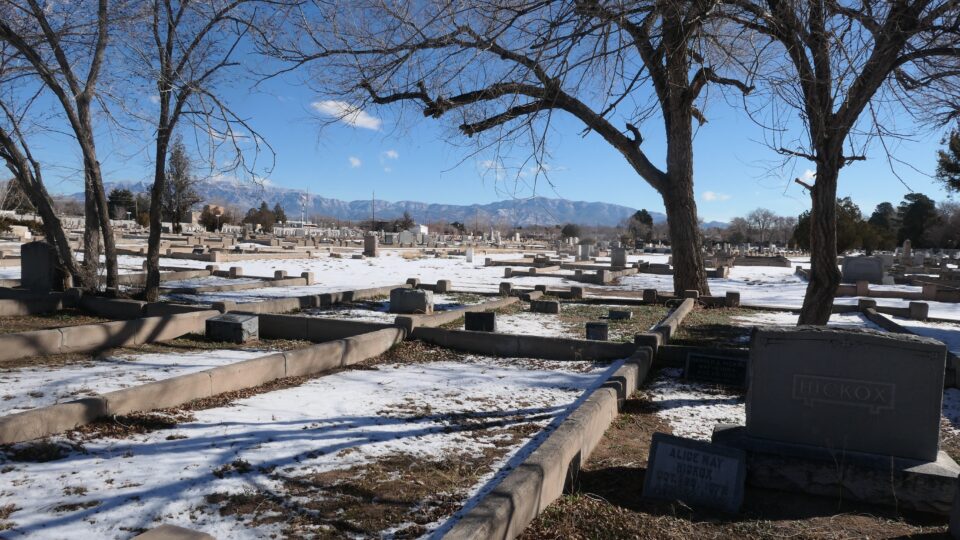
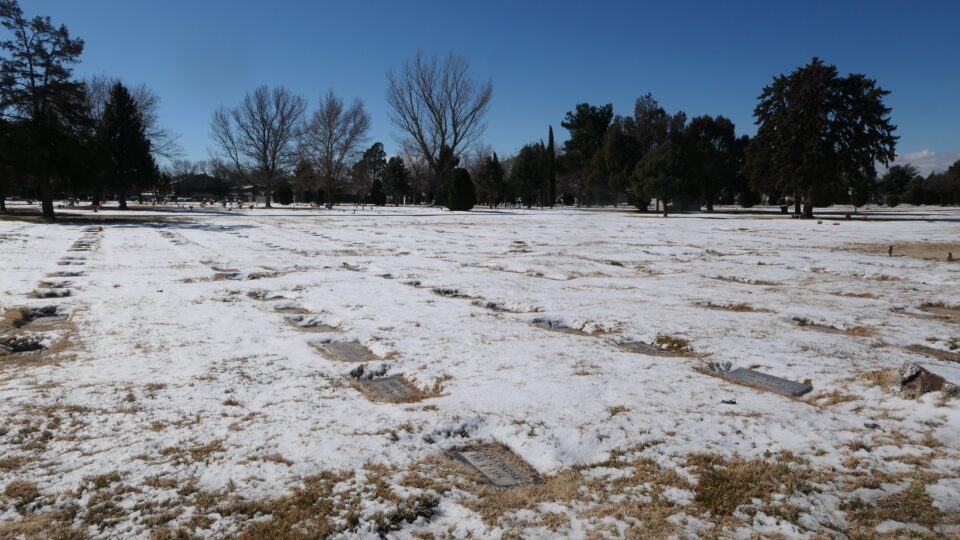
The Congregation Albert Cemetery was founded in 1892 as Bnai Brith Cemetery by Bnai Brith Lodge No. 336. It was acquired, and renamed, by Congregation Albert Temple, the Reform Jewish Temple in Albuquerque in 1902. The cemetery has many upright tombstones as well as ground level markers. Some of the ground level markers were covered by snow and not readable. Among the names, were some of the Jewish pioneer family names we were already familiar with – Illfeld, Staab, Seligman…

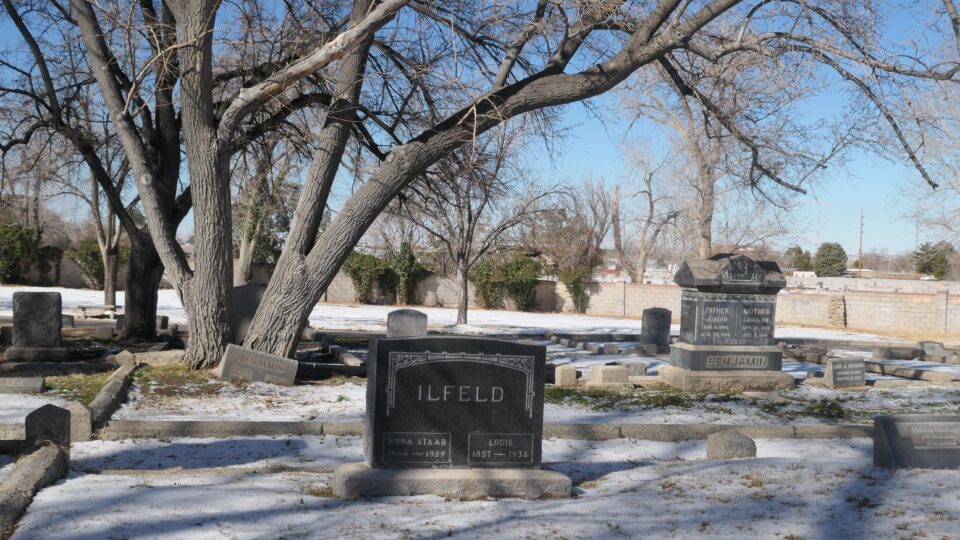

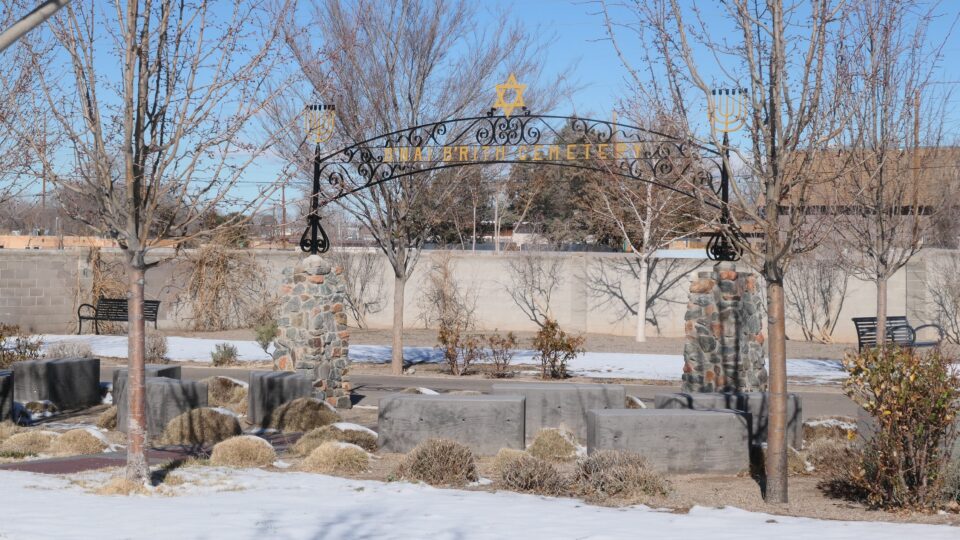
From the cemetery, we drove to downtown Albuquerque, the location of the New Mexico Holocaust & Intolerance Museum. The museum was founded in 2001 by Holocaust survivor Werner Gellert and his wife, Frances Gellert, to educate people about the Holocaust as well as other genocides. Their mission is to use the lessons and personal stories of the Holocaust to educate, inspire, and teach others how to confront hate and bigotry and not to remain silent.
Unfortunately, when we arrived there, we discovered that the museum was closed today for a personal event. Not having such a successful day.
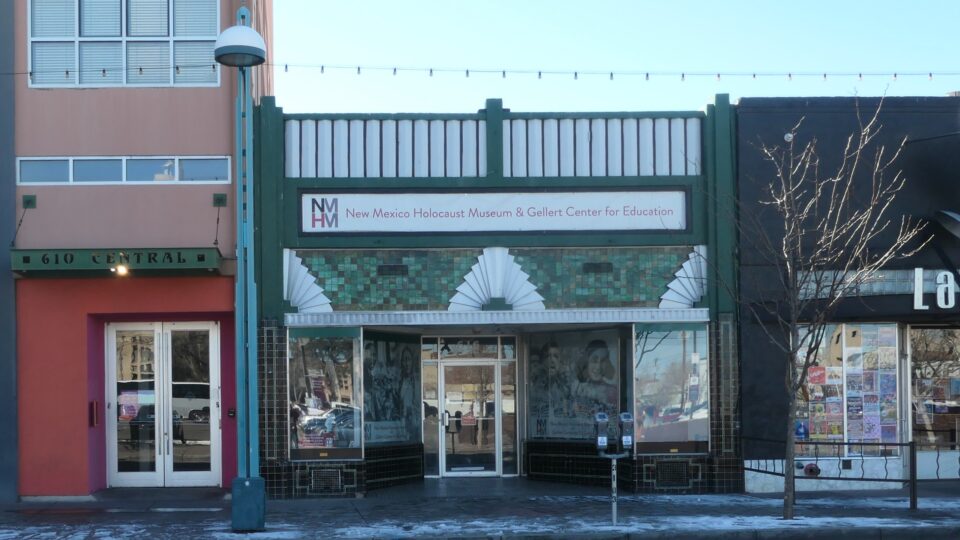
To add insult to injury, we later realized that one block away, in the Civic Plaza in downtown Albuquerque is a Holocaust Memorial, that we had overlooked. The monument was built in 1998 by sculptor Jake Lovato. It looks like a large cylinder covered in metal designed to look like bodies rising in a smokestack. Five triangular panels surround the sculpture, each with information about the holocaust.
Not far from the museum, in the downtown area, is an old residential district of private family homes. One of the historic homes is noted to be the city’s best example of Prairie School architecture. Prairie School is a late 19th and early 20th-century architectural style usually marked by horizontal lines, flat roofs, windows grouped in horizontal bands etc. Horizontal lines were thought to evoke the wide, flat, treeless expanses of America’s prairie landscape.
The house we were looking for is known as the Berthold Spitz House. It was built around 1910 by Berthold and his wife Fannie Schutz Spitz. Berthold was a German Jewish merchant who was born in Bohemia (present-day Czech Republic) and immigrated to Albuquerque around 1880. He ran a successful dry goods business and made a few forays into local politics before being appointed as the city’s postmaster in 1921.Fannie grew up in El Paso with Jewish German immigrant parents and was an inventor. She patented the first machine to shell pine nuts for commercial use. Interestingly, she was described by the Albuquerque Journal as “the greatest known authority on the piñon nut and its possibilities.” I have no idea if they are related to the Spitz, as in the Spitz Clock, family in Santa Fe,
On the column near the front entrance of the house is a historical marker that reads Designed by Henry Trost and built about 1910 for merchant-politician Spitz and family, its Prairie Style harks back to the Midwest.
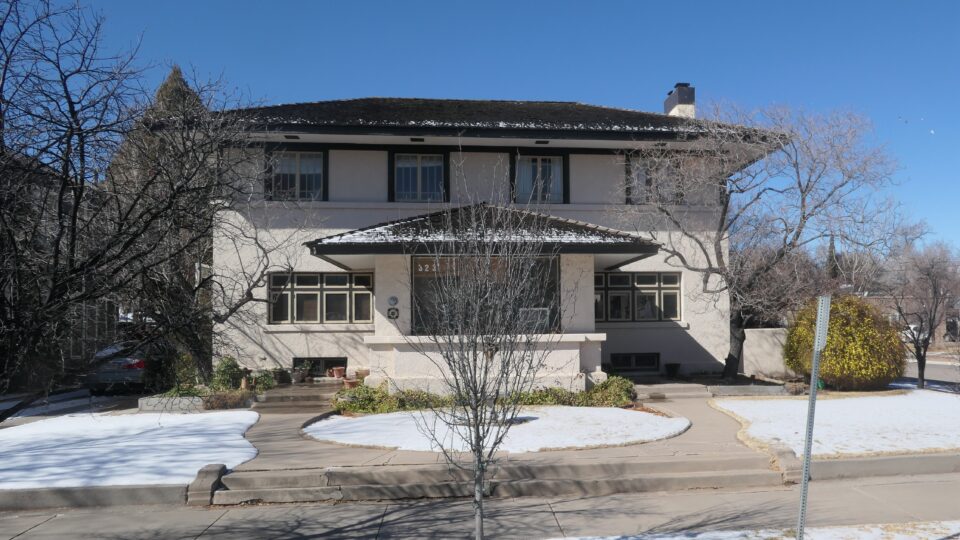
Around the corner is another historical marker, on the Grunsfeld Hubbell House. This house was built in 1883 by Albert Grunsfeld, a Jewish merchant who came to Albuquerque in the late 1870’s and became a prominent member of the community. Temple Albert, the city’s Reform Synagogue, is named after him. In 1901, the house was sold to John Lorenzo Hubbell, thus it is known as the Grunsfeld Hubbell house.
Near the front door is the historical marker that reads Built in 1883, this house is the only one in the Robinson Park area to survive virtually unchanged since the railroad period.
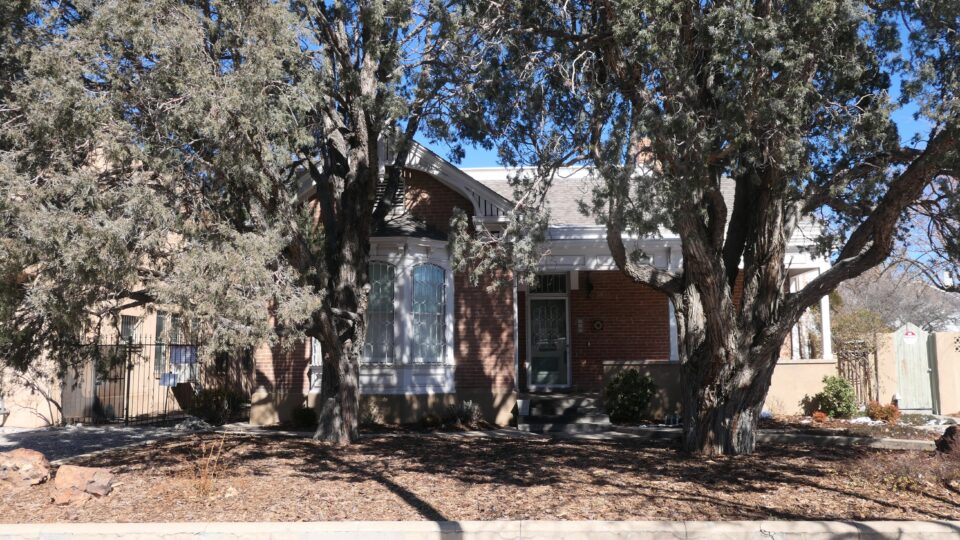
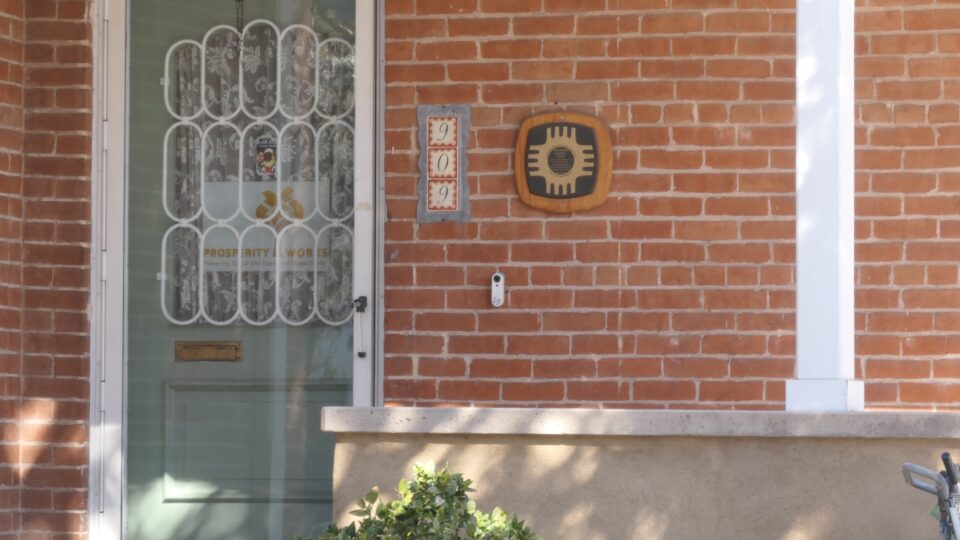
Note that both historical markers only mention the history of the building, not the Jews that built and lived in the houses. They remain unacknowledged.
From downtown we drove to Old Town Albuquerque. The historic Old Town has been the heart of Albuquerque since the city was founded in 1706. Today, Old Town is the city’s cultural center, with numerous museums and more than 100 shops, galleries, and restaurants.
We started our visit at the Albuquerque Museum, one of the museums in Old Town. The museum has many different exhibits and we selected to see the one entitled “Only in Albuquerque.” The exhibit tells the story of the city from before written history to the present. The story is told through four galleries: Spirited, Courageous, Resourceful and Innovative, all connecting to a central gallery entitled Our Land.
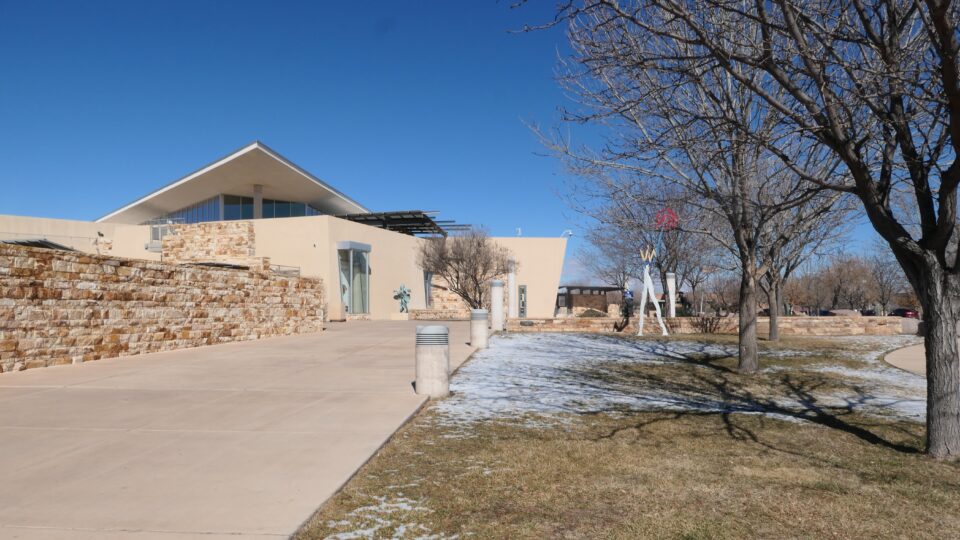

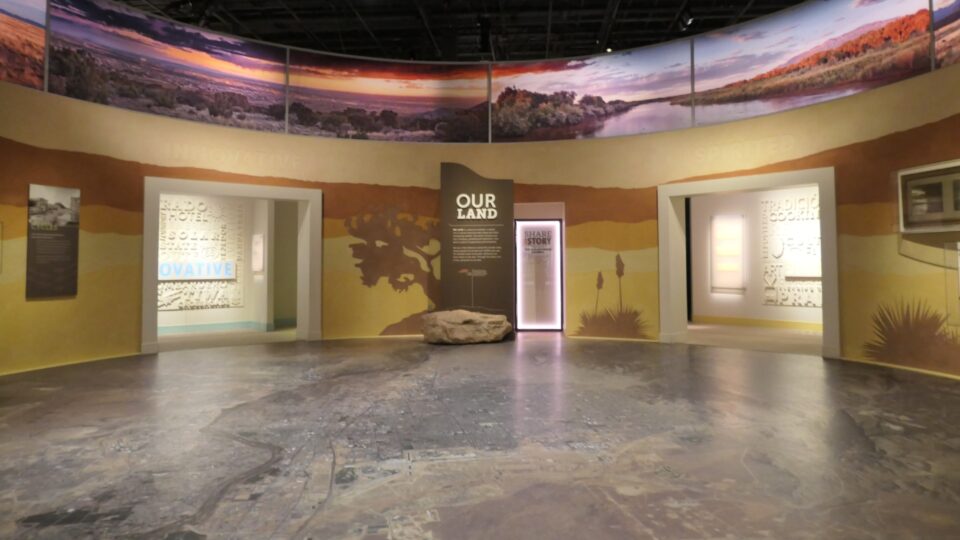
In addition to learning about the history of Albuquerque, we were looking specifically for any mention of the Jewish history in the area. The New Mexico History Museum in Santa Fe had a few mentions of the pioneer Jews that lived in the Southwest. Would the Albuquerque Museum also mention them?
We found that Judaism was mentioned as one of the many religions that are practiced in this religiously diverse area. Interestingly the photo that accompanied this display was of a 50th anniversary celebration of a Jewish couple standing under a chuppah.
In a display on self-government, they mention that Albuquerque was first incorporated as a town in 1885. The residents then elected Henry Jaffa, a German-Jewish merchant, as the town’s first mayor. Jaffa was also the first president of Congregation Albert, founded in 1897. This is same Congregation Albert that was named after Albert Grunsfeld, whose house we had just seen, and the same Congregation Albert that purchased and renamed the cemetery in 1902 we visited this morning.
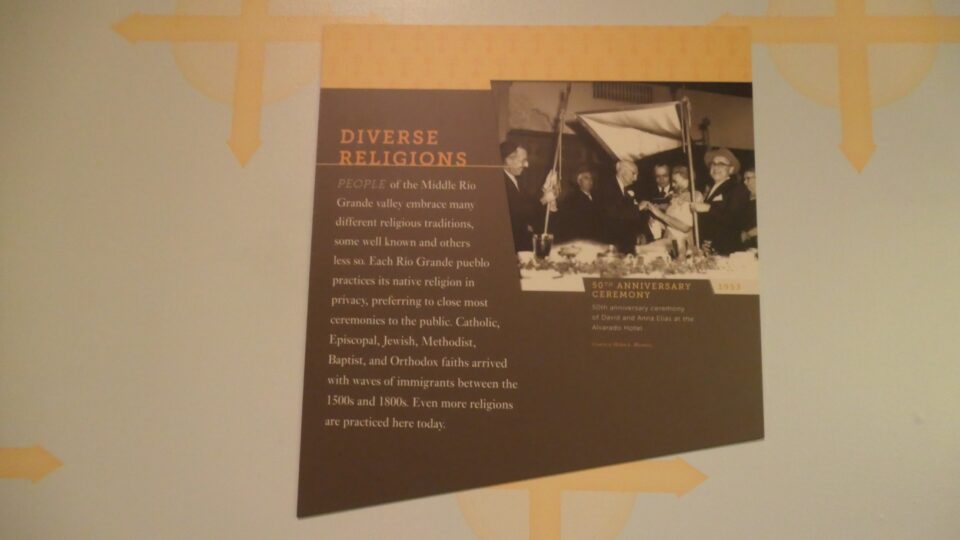
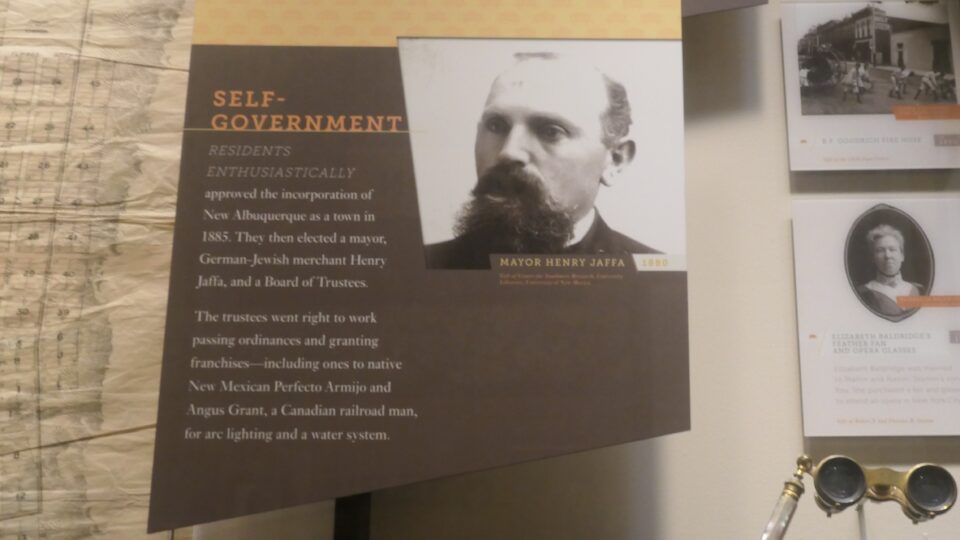
Other than these two brief mentions, we did not find any other information about the contribution of the Jews to the history of the area.
From the museum we went browsing through the stores of the old town. Being a cold winter day, many were closed.
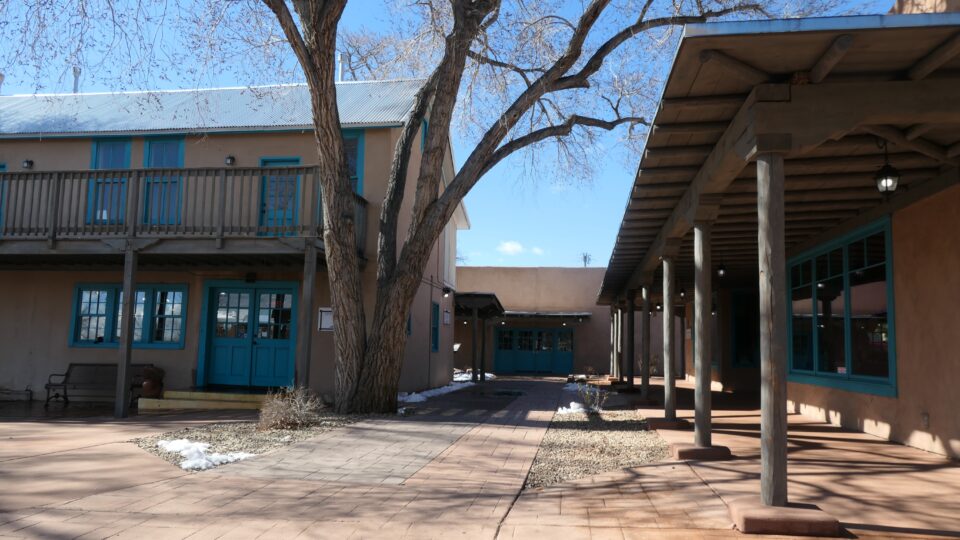
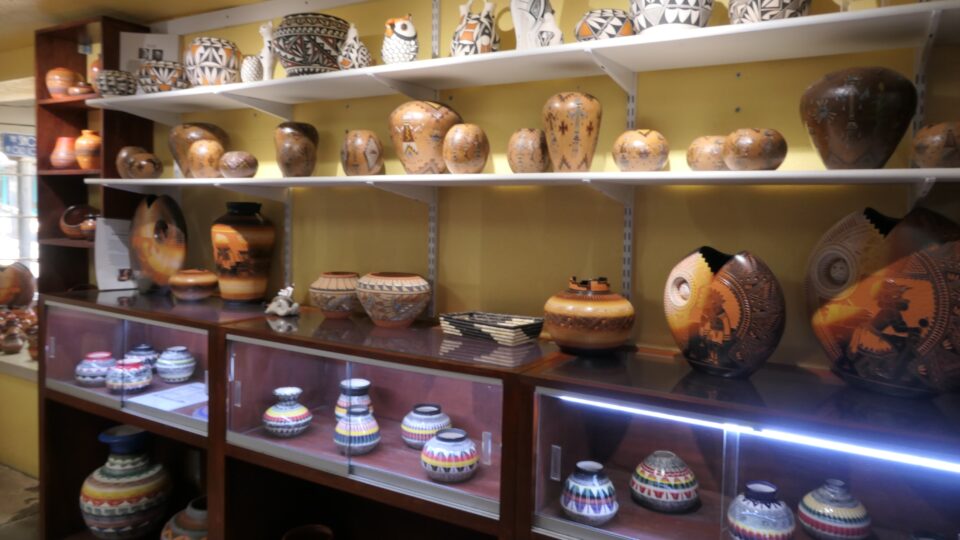
After strolling around, we drove to a shopping plaza not far from our campground. One of our suitcases had cracked on the way here, and we wanted to replace it. We spent the next few hours shopping – TJ Maxx, DSW, Nordstrom Rack, Dillards, and so on.
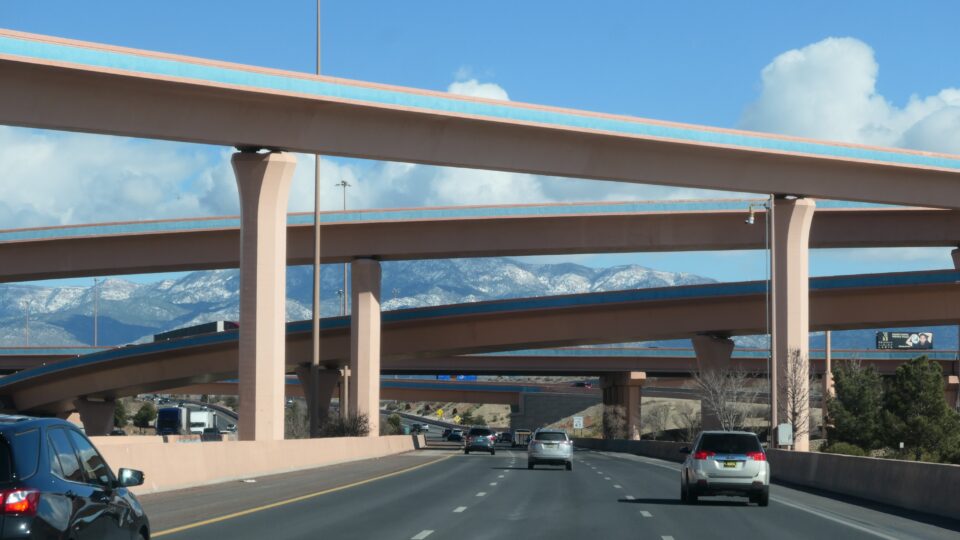
Shopping is not one of our favorite pastimes so afterwards we treated ourselves by eating dinner out, usually a more enjoyable activity. We drove to a nearby Thai vegan restaurant.
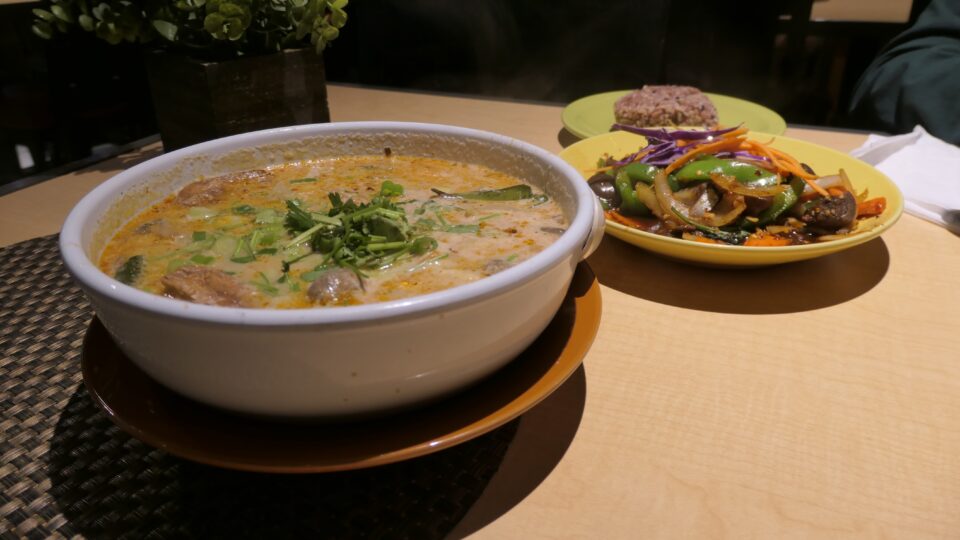
The food looked good, and my Tom Ka Kai soup was quite delicious. However, what Mark ordered was so spicy that he coughed and his eyes watered. He ate his spicy eggplant entree between many drinks of water. He said it was good, but I am not sure he really enjoyed it. It was an appropriate ending to the day – a day where not everything went perfectly well.
